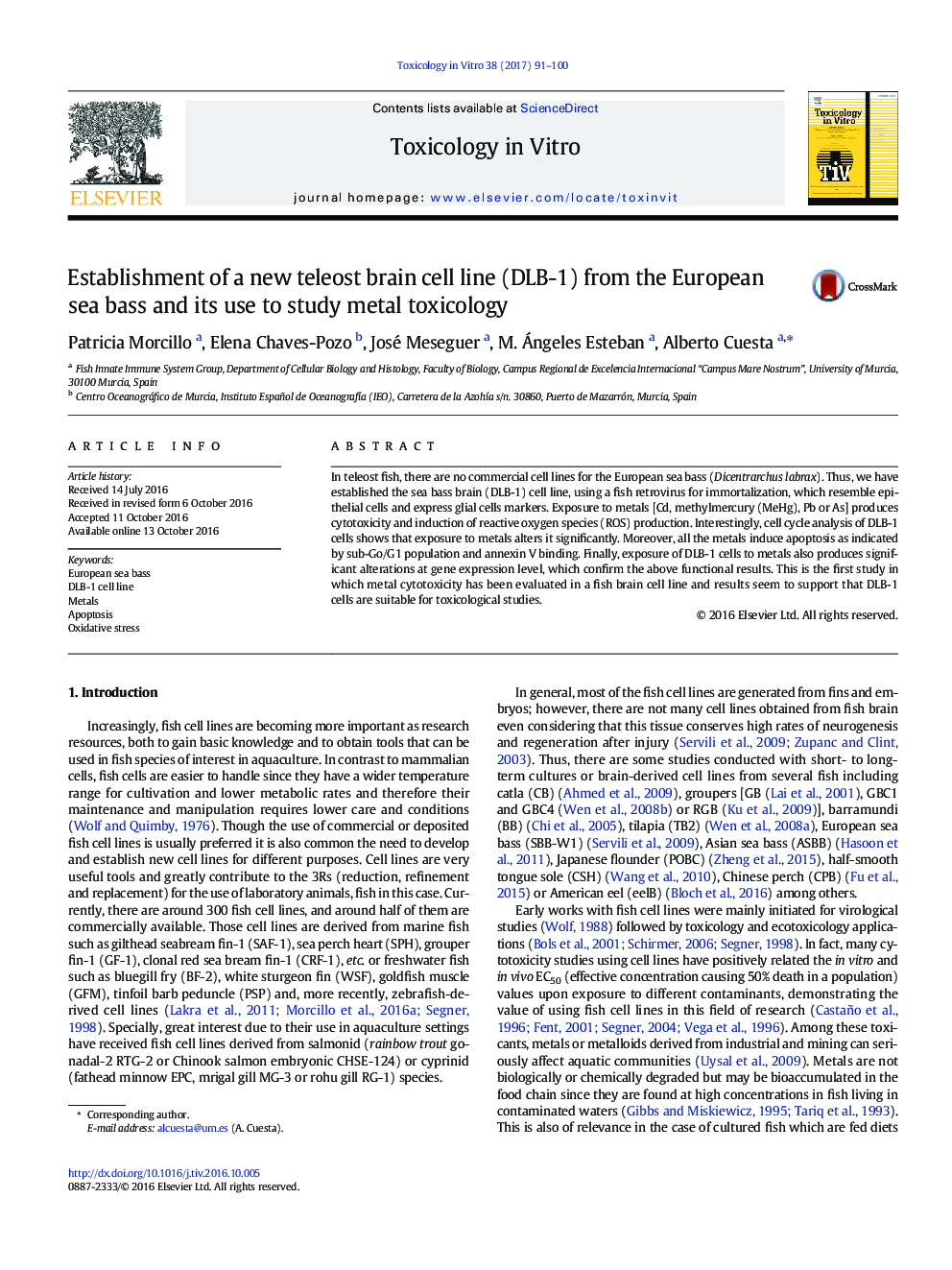| Article ID | Journal | Published Year | Pages | File Type |
|---|---|---|---|---|
| 5562764 | Toxicology in Vitro | 2017 | 10 Pages |
â¢We have established a new brain cell line (DLB-1) from European sea bass.â¢DLB-1 cells show rapid growth and glial origin.â¢Metals produce cytotoxicity in DLB-1 being Cd the most toxic.â¢DLB-1 cell line might be useful for fish neurotoxicological studies.
In teleost fish, there are no commercial cell lines for the European sea bass (Dicentrarchus labrax). Thus, we have established the sea bass brain (DLB-1) cell line, using a fish retrovirus for immortalization, which resemble epithelial cells and express glial cells markers. Exposure to metals [Cd, methylmercury (MeHg), Pb or As] produces cytotoxicity and induction of reactive oxygen species (ROS) production. Interestingly, cell cycle analysis of DLB-1 cells shows that exposure to metals alters it significantly. Moreover, all the metals induce apoptosis as indicated by sub-Go/G1 population and annexin V binding. Finally, exposure of DLB-1 cells to metals also produces significant alterations at gene expression level, which confirm the above functional results. This is the first study in which metal cytotoxicity has been evaluated in a fish brain cell line and results seem to support that DLB-1 cells are suitable for toxicological studies.
